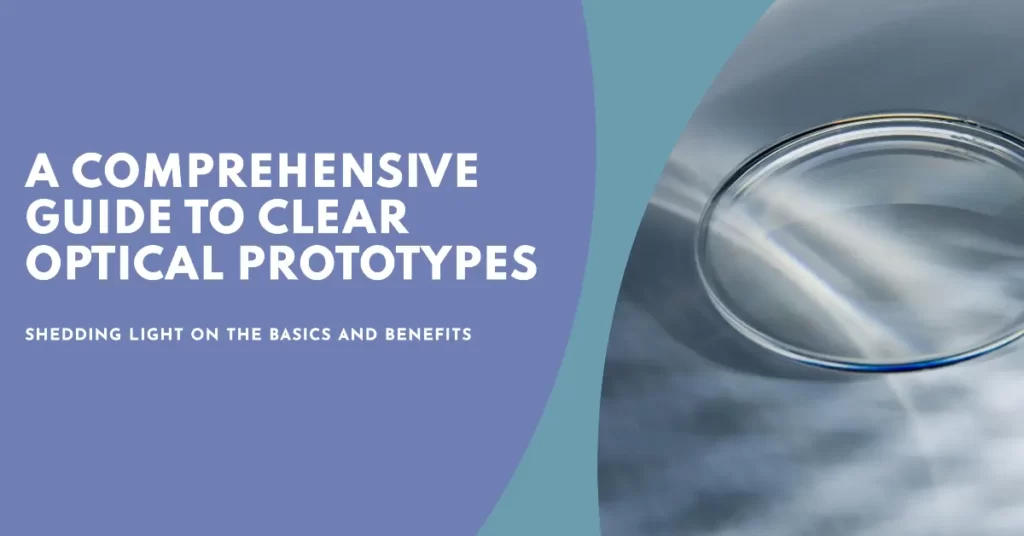
Numerous prototyping applications leverage clear plastic components to fulfill optical requirements, allow internal viewing of products, or enhance visual appeal. Acting as the cornerstone for sectors valuing precision, clarity, and aesthetics, these prototypes have gained prominence. By adopting technological progressions like CNC machining and skillful utilization of materials such as Polycarbonate and Acrylic, these prototypes are driving pioneering developments.
This article will take you on a detailed look through the world of clear optical prototypes, and uncover their nuances, production methods, and their applications in real-world scenarios.
What are Clear Optical Prototypes?
Clear Optical Prototypes are transparent model versions of optical components. Their transparent nature is not just for aesthetic appeal, but they serve a broader purpose, providing insight into the final product’s performance, appearance, and effectiveness.
Now, to truly grasp the importance of these prototypes, it’s essential to understand their foundational elements. In essence, these prototypes are designed to replicate, on a smaller scale, the final optical components in various products. Unlike regular prototypes, which might focus on function alone, clear optical prototypes emphasize both function and optical clarity. This dual emphasis ensures that not only does the prototype work as intended, but it also provides the correct light distribution, refractive index, and translucency.
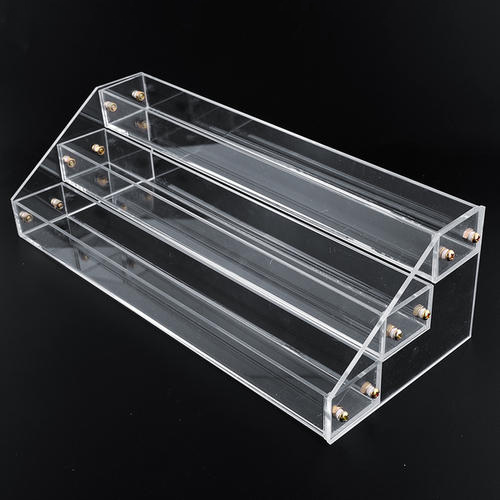
Example of a clear optical prototype
- Clear optical prototypes are vital in sectors needing precision, clarity, and effective light manipulation.
- They’re pivotal in refining designs, such as smartphone camera lenses and vehicle dashboard displays.
- Rigorous testing with these prototypes ensures the final product’s optimal optical performance.
- The choice of materials, especially Polycarbonate and Acrylic, is crucial for these prototypes.
- Selection factors include light transmission capabilities, intended use, durability, and budget considerations.
Why is Transparency Important in Prototypes?
The prototyping stage is pivotal in the product development cycle, serving as the bridge between conceptual ideas and tangible products. Transparency, often perceived as a mere attribute, plays a more significant role than one might initially realize.
Let’s dissect the importance of transparency in prototypes through a detailed breakdown:
Insight into Internal Mechanics:
- At its core, prototyping aims to replicate the final product’s attributes, both aesthetically and functionally.
- Transparent prototypes provide an unobstructed view of a design’s interior. This clear insight allows designers, engineers, and stakeholders to identify and rectify any design inconsistencies or potential weaknesses before advancing to the next stages.
Enhanced Optical Analysis:
- Industries like aerospace and automotive heavily rely on optics, where components such as dashboard displays and cockpit instruments are indispensable.
- Transparent prototypes, in such scenarios, allow for an accurate evaluation of how these components behave under varied light conditions. By simulating real-world scenarios, they ensure the final product delivers impeccable performance.
Medical Precision:
- In the realm of healthcare, devices like microscopes and endoscopes must offer perfect clarity.
- Transparent prototypes enable manufacturers to mimic the exact visual experience medical professionals would encounter, allowing for adjustments that ensure optical perfection.
Economic Efficiency and Collaboration:
- Identifying potential design flaws early, thanks to the clear view provided by transparent prototypes, can prevent costly modifications later in the product development process.
- Having a tangible representation that mirrors the final product fosters more accurate and constructive feedback from stakeholders, streamlining the development timeline.
Building Trust with Transparency:
- Beyond the physical attribute, transparency carries a symbolic meaning in the modern consumer landscape.
- Brands showcasing transparent prototypes underline their commitment to quality, openness, and customer engagement. This strategy can significantly boost consumer trust and loyalty.
Material and Processing Choices:
- Achieving the desired level of clarity in a prototype involves choosing the right materials, such as Polycarbonate (PC) and Acrylic, known for their transparent properties.
- Beyond material selection, the methods used for processing, such as molding or machining, play a crucial role in the final transparency level of the prototype.
While it’s clear that transparency in prototypes provides a plethora of advantages, it’s essential to acknowledge that achieving this transparency requires expertise, the right materials, and precision in processing techniques.
Methods to Create Clear Optical Prototypes
The endeavor to craft these transparent prototypes rests on several methodologies, each boasting its unique characteristics and benefits. To glean a comprehensive understanding of these processes, let’s take a deep look at two important methods: CNC Machining and Injection Molding.
CNC Machining Method
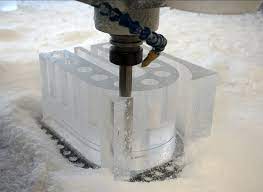
CNC (Computer Numerical Control) Machining is a subtractive manufacturing process where material is removed from a solid block using a variety of cutting tools to create the desired part. This method has risen in popularity for crafting clear optical prototypes for several compelling reasons:
- Precision and Detailing
CNC Machining is renowned for its unmatched precision. This exactness is especially crucial when designing prototypes that necessitate intricate detailing, such as optical components for aerospace applications.
- Material Versatility
Clear materials such as Polycarbonate (PC) and Acrylic can be machined effortlessly, making CNC Machining a favored choice for producing clear optical prototypes.
- Surface Finish Options:
Depending on the required transparency level, CNC Machining offers a range of surface finishes. Post-machining, components can be polished to achieve a crystal-clear finish, enhancing their optical properties.
Read More: polycarbonate polishing from basics to applications
- Rapid Turnaround
Given the computer-controlled nature of this process, once the design is finalized and input into the machine, production can be swift. This efficiency translates to faster prototype turnarounds, which is invaluable in time-sensitive projects.
- Scalability Concerns:
While CNC Machining is ideal for low to medium-volume production, it might not be the most cost-effective choice for large-scale manufacturing, primarily due to the time taken for each piece and the wear and tear of cutting tools.
Injection Molding Method
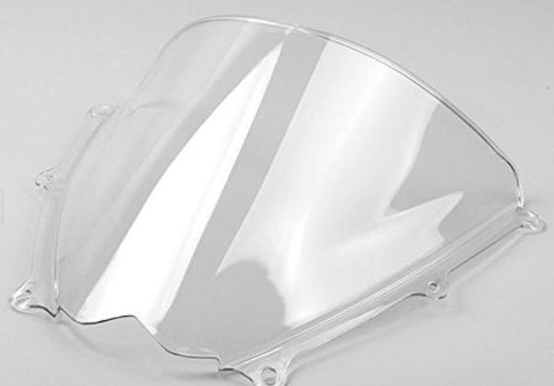
Injection molded transparent part
Moving from a subtractive method to a formative one, Injection Molding stands as another formidable technique for crafting clear optical prototypes. In this process, molten material is injected into a mold, which upon cooling, solidifies to form the desired part. Let’s explore the facets of this method:
- Suitability for Mass Production
Contrary to CNC Machining, Injection Molding excels when it comes to high-volume production. Once the initial mold is crafted, subsequent parts can be produced rapidly, making it economically viable for large batches.
- Material Flexibility
A plethora of thermoplastics, including clear ones like Polycarbonate and Acrylic, are amenable to injection molding. This flexibility allows designers to choose the ideal material based on the prototype’s intended application and durability requirements.
- Consistent Reproducibility
Injection Molding ensures a high degree of repeatability. Each molded part is virtually identical to the preceding one, ensuring consistency, a trait particularly vital when precision and uniformity are non-negotiable.
- Upfront Costs
While the per-piece cost in Injection Molding is low, especially in large quantities, there’s a significant initial investment. Crafting the mold, often done via CNC Machining, can be expensive. However, it’s a one-time cost, and over large batches, this cost is effectively amortized.
- Limitations in Design Changes
Once the mold is created, making alterations to the design can be challenging and costly. Therefore, it’s imperative to finalize the design before opting for Injection Molding, to avoid expensive reworks.
Table: Comparison between CNC Machining and Injection Molding
| Parameter | CNC Machining | Injection Molding |
|---|---|---|
| Primary Process | Subtractive | Formative |
| Scalability | Best for low to medium volumes | Ideal for high-volume production |
| Material Range | Wide, including metals and plastics | Primarily thermoplastics |
| Precision | High precision and intricate detailing | Consistent reproducibility |
| Initial Cost | Relatively low setup cost | High upfront cost (due to mold creation), but low per-piece cost |
| Design Flexibility | Easy to make changes between runs | Design changes post mold creation can be expensive and challenging |
Try Prolean Now!
Materials for Clear Optical Prototypes
In the quest for the creation of impeccable clear optical prototypes, selecting the right material is half the battle won. The material choice not only impacts the prototype’s aesthetic appeal but also influences its durability, functionality, and overall performance. To provide a deeper understanding, let’s dive into two of the most sought-after materials for crafting these prototypes: Polycarbonate (PC) and Acrylic.
Polycarbonate (PC)
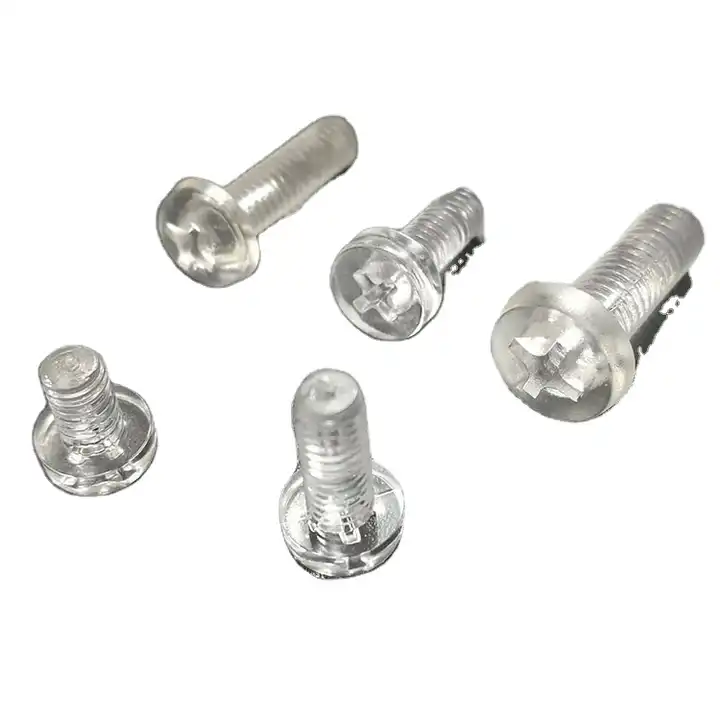
Polycarbonate is a robust and transparent thermoplastic material known for its impressive combination of toughness, optical clarity, and versatility. Here’s an exploration of its attributes:
- Exceptional Durability: Among its many selling points, the PC’s impact resistance stands out prominently. Its strength is such that it’s often used for bulletproof glass and safety goggles.
- High Optical Clarity: For projects demanding high transparency, PC offers an ideal solution. With its clear-as-glass appearance, it’s frequently chosen for lenses, optical disks, and other precision optical components.
- Heat Resistance: Polycarbonate exhibits remarkable resistance to temperatures, making it suitable for applications exposed to high heat scenarios.
- Flexibility in Forming: Given its thermoplastic nature, PC can be molded or thermoformed into intricate shapes without losing its innate properties, offering designers a playground of possibilities.
- UV Resistant Variants: While standard PCs can be susceptible to UV degradation over time, manufacturers have introduced UV-resistant variants, ideal for outdoor applications.
Acrylic
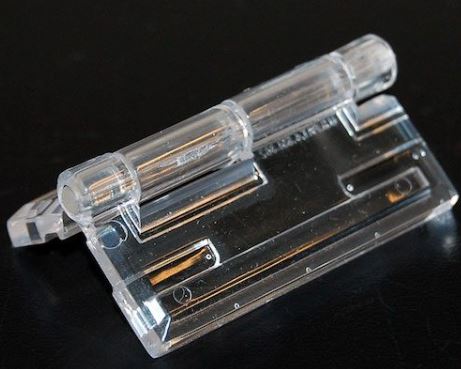
CNC-machined custom acrylic prototype
Acrylic, often referred to by brand names like Plexiglas or Perspex, is another transparent thermoplastic with attributes that make it a staple in clear optical prototyping:
- Brilliant Clarity: Acrylic boasts a transparency level that can even surpass that of glass. This luminescence makes it a preferred choice for display cases, signage, and even aquariums.
- Lightweight Nature: Despite its glass-like appearance, acrylic is significantly lighter, making it more manageable and reducing the overall weight of prototypes.
- Resistance to Weathering: Acrylic showcases commendable resistance to the elements. Its durability in outdoor scenarios, combined with its UV resistance, ensures longevity.
- Easily Machinable and Moldable: Acrylic’s receptive nature to machining processes like CNC and ease of molding adds to its appeal, granting designers the freedom to sculpt as per their imagination.
- Sensitivity to Chemicals: One of the considerations when working with Acrylic is its sensitivity to certain chemicals. Using incompatible solvents can lead to cracks or other damages.
Table: Comparative Analysis of Polycarbonate and Acrylic
| Attribute | Polycarbonate (PC) | Acrylic |
|---|---|---|
| Transparency | High, but slightly less than Acrylic | Exceptionally High |
| Impact Resistance | Very High | Moderate |
| Weight | Moderately Lightweight | Very Lightweight |
| Heat Resistance | High | Moderate |
| Machinability | Easily Machinable | Easily Machinable |
| UV Resistance | Available in UV-resistant variants | Naturally UV Resistant |
| Chemical Sensitivity | Resistant to many chemicals | Sensitive to specific chemicals |
Clear Optical Prototypes in the Automotive Industry
The automotive industry is one that thrives on innovation and precision. As technology drives forward, the components and systems within our vehicles become increasingly sophisticated, demanding greater attention to detail.
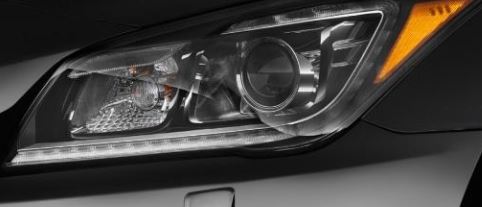
Automotive application of optical prototype
Clear optical prototypes play a vital role in this evolution, ensuring components not only meet aesthetic requirements but perform optimally under various conditions. Two of the most critical applications within this sector are headlamp design and dashboard displays.
Headlamp Design: Ensuring the Ideal Spread and Intensity of Light
Modern-day headlamps are more than just illumination tools; they are an amalgamation of design, technology, and functionality. Getting them right is a blend of art and science.
- Influence on Aesthetics: The shape and luminosity of headlamps significantly influence a vehicle’s frontal appearance. Prototyping ensures the design aligns with the car’s overall aesthetic vision.
- Safety Considerations: A headlamp’s primary objective is to provide clear visibility. By using clear optical prototypes, manufacturers can test various designs to determine which provides the most effective spread and intensity of light, ensuring safe navigation during nighttime or low-visibility conditions.
- Energy Efficiency: As vehicles lean more towards energy conservation, it’s crucial for headlamps to deliver optimal luminosity without draining excessive power. Prototyping helps in striking this balance.
- Material Testing: Different materials refract light differently. Through prototyping, manufacturers can experiment with various materials, identifying which offers the ideal light diffusion and durability.
- Integration with Sensors: Modern cars come equipped with adaptive headlamps that adjust based on external conditions. Prototyping ensures that these sensors work seamlessly with the headlamp design, offering real-time adjustments.
Dashboard Displays: Checking Clarity and Visibility in Various Light Conditions
The dashboard is a driver’s primary interface with their vehicle, providing essential information ranging from speed to engine health. As vehicles become smarter, so do their dashboards.
- Readability in Diverse Lighting: Whether it’s the bright midday sun or the low light of dusk, a dashboard display must remain clearly readable. Clear optical prototypes assist in testing different display designs, ensuring they are legible in a wide array of lighting conditions.
- Integration of Touch and Gesture Controls: As touchscreens and gesture-controlled interfaces make their way into modern dashboards, it’s essential to ensure that these technologies integrate flawlessly into the display without compromising on clarity.
- Ergonomic Considerations: The placement of information, icons, and controls on a dashboard should align with ergonomic principles, ensuring drivers can access information without undue strain. Prototyping aids in finalizing such ergonomic layouts.
- Durability and Longevity: Dashboard displays are continuously exposed to sunlight, which can lead to fading or distortion over time. By leveraging clear optical prototypes, manufacturers can test various materials and coatings that offer protection against such prolonged exposure.
- Customization Options: Modern drivers value personalization. The dashboard of tomorrow isn’t just about displaying information but allowing drivers to customize what they see and how they see it. Prototypes play an essential role in designing such adaptive dashboards.
Benefits of Using Clear Optical Prototypes
In the realm of product development and design, prototypes serve as tangible representations of concepts, allowing teams to explore, test, and refine their ideas. But when it comes to areas where the clarity, translucence, or optical properties are paramount, clear optical prototypes take center stage. The advantages of using these prototypes go beyond just visual assessment. Let’s delve deeper into these benefits.
Quick Validation of Design Concepts
First impressions can be everything, especially when you’re pitching a new product or idea. Clear optical prototypes allow designers and stakeholders to:
- Visualize and Assess: Unlike traditional mockups, clear optical prototypes enable a complete and transparent view of the product, allowing for an immediate grasp of its design nuances and functionalities.
- Iterative Testing: As prototypes replicate the final product’s visual and functional attributes, they facilitate quick feedback loops. Design teams can make prompt adjustments based on real-world testing and feedback.
- Stakeholder Engagement: When presenting to stakeholders or potential investors, having a tangible, clear prototype can be a game-changer. It gives them a vivid sense of the product’s potential and can often lead to quicker buy-in or approval.
Cost-effective Compared to Full Production
Diving straight into full-scale production without a clear picture (literally and figuratively) can be a costly mistake. With clear optical prototypes:
- Material Savings: Before committing to bulk material purchases, prototypes allow you to test smaller quantities, ensuring they’re right for the job. This avoids wastage and unnecessary expenses.
- Reduction in Production Errors: By identifying design flaws or inefficiencies early in the prototyping phase, businesses can avoid costly mistakes during the full production phase. This not only saves money but also valuable resources and time.
- Facilitated Market Research: Before launching, prototypes can be used for market research, ensuring that the target audience appreciates the design and functionality. This pre-emptive approach can save substantial costs associated with post-launch changes or, in worst-case scenarios, product recalls.
Reduction in Time-to-market for Products
In today’s fast-paced world, being first can often mean being the best. Clear optical prototypes contribute to a faster development cycle:
- Swift Feedback Incorporation: Instead of waiting for the production phase to get user feedback, clear prototypes allow immediate insights. This expedites the revision process, ensuring a more refined product in a shorter time.
- Parallel Development Processes: While the product is in its prototyping phase, other aspects of product development, such as marketing strategies or packaging designs, can commence. This parallel approach reduces the overall time-to-market.
- Streamlined Production: Once the prototype is validated, the transition to full-scale production is smoother. With a tried and tested blueprint in place, production teams have a clear direction, resulting in faster rollout times.
Revolutionizing the Prototype Landscape: Prolean’s Clear Optical Mastery
In a world where design precision, functionality, and aesthetics go hand in hand, the significance of prototyping cannot be understated. Clear optical prototypes, in particular, have carved a niche, setting new standards for industries worldwide. But it’s not just about the technology or the concept; it’s about who wields it.
Enter Prolean, the vanguard of innovation in rapid prototyping for clear optical parts.
Prolean’s Distinctive Edge in Rapid Prototyping
- Innovative Techniques: Prolean harnesses state-of-the-art techniques, merging traditional craftsmanship with modern technology to produce impeccable clear optical prototypes.
- Time Efficiency: Recognizing the fast-paced demands of industries, Prolean guarantees a swift turnaround, ensuring projects remain on schedule without compromising quality.
- Cost-effective Solutions: While quality remains paramount, Prolean also focuses on providing value. Their prototyping solutions are competitively priced, ensuring businesses get top-tier quality without straining their budgets.
- Expertise and Skillset: The backbone of Prolean is its team – seasoned experts who bring a wealth of experience and innovation to the table, ensuring each prototype is not just a model but a masterpiece.
Read More:
- Understanding Fitting in Precision Engineering
- Understanding the World of Bearings
- Understanding Helixing: The Essential Guide to the Helix Angle in Machining
- Alodine vs Anodize: Deciphering Surface Finishes for Aluminum
- 4130 vs 4140: The Steel Showdown
Conclusion
As we journey through the intricate labyrinth of product development, the role of clear optical prototypes emerges as a beacon of clarity and precision. These prototypes, transcending mere aesthetics, have rooted themselves deep into the core of design and testing processes. Their ability to swiftly validate designs, offer cost-efficient insights, and remarkably reduce time-to-market is undeniably transformative. Industries, especially those like automotive, are harnessing their power to bring forth innovations that are not only functional but also visually captivating. Yet, as with all technologies, the true essence lies in its adept application. Partnerships with pioneers, like Prolean expertise with state-of-the-art rapid prototyping services, can elevate the potential of these prototypes manifold.
FAQs
What are clear optical prototypes used for?
Clear optical prototypes are used for design validation, ensuring optical performance, and aesthetic checks.
Why are Polycarbonate and Acrylic popular choices?
Both materials offer excellent clarity, with Polycarbonate being more durable and Acrylic being more UV resistant.
Is CNC machining better than injection molding for prototypes?
CNC machining offers precision for complex designs, while injection molding is ideal for bulk production.
How do prototypes benefit the automotive industry?
They assist in designing clear and efficient headlamps, dashboard displays, and other optical components.
Can these prototypes withstand harsh conditions?
Depending on the material chosen, many prototypes can resist impacts, UV rays, and other environmental factors.
Where can I get top-notch rapid prototyping services?
Prolean’s Rapid Prototyping Services is a recommended choice for high-quality, speedy prototype development



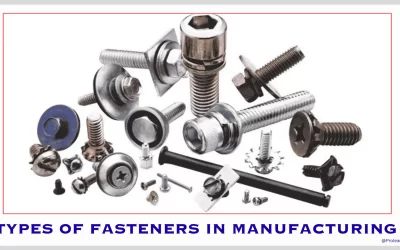
0 Comments